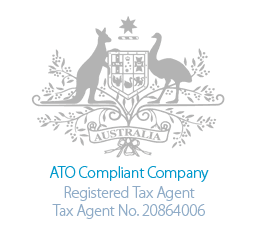6 Tax Benefits of Investment Properties
A well-chosen investment property doesn’t just generate rental income. It can unlock a range of tax advantages that boost cash flow and improve long-term returns.
According to the Australian Taxation Office (ATO), more than 2.2 million Australians own at least one investment property. For many, the tax benefits are just as appealing as the rental income. From deductions on everyday expenses to long-term depreciation claims, these advantages can make a noticeable difference to your bottom line.
In this article, we’ll explore six of the most significant tax benefits available to property investors and why understanding them could be the difference between a good investment and a great one.
TL;DR – Quick Takeaways
- Investment properties can deliver multiple tax benefits beyond rental income.
- Key advantages include expense deductions, depreciation, negative gearing, loan interest claims, capital works deductions, and in some cases, travel-related expenses.
- A comprehensive residential tax depreciation schedule is one of the most effective ways to ensure all allowable deductions — and investment property tax offsets — are claimed in line with ATO rules.
1. Everyday Expenses Can Add Up to Big Savings
Owning an investment property comes with its share of costs, but the good news is that many of these are tax-deductible. These include property management fees, council and water rates, landlord insurance, advertising for tenants, and even the cost of repairs.
Keeping organised records is essential, not just for compliance, but to ensure nothing slips through the cracks. If you’re planning upgrades or renovations, using a DA cost estimates service can help you budget more accurately while considering potential tax implications.
2. Depreciation — The Silent Money-Saver
One of the most overlooked tax benefits is property depreciation. Over time, buildings and their assets, from hot water systems to carpet, lose value. A well-prepared depreciation schedule turns that decline into a deduction you can claim every year.
Best of all, it doesn’t cost you anything out of pocket. Based on our experience preparing reports for thousands of investors, many claim between $5,000 and $10,000 in their first year, which aligns with the average depreciation deductions for investment properties when properly assessed. The key is ensuring your schedule is ATO-compliant so you capture every allowable deduction.
3. Negative Gearing Can Reduce Your Tax Bill
If your investment property costs more to run than it earns in rental income, the loss, known as negative gearing, can often be offset against your other taxable income. This reduces the tax you pay while you hold the property, which can be particularly helpful in the early years of ownership.
The ATO’s rental property deductions guide is a valuable reference for the official rules. In practice, negative gearing strategies can significantly improve cash flow when paired with long-term capital growth planning.
4. Interest Deductions on Investment Loans
Loan interest is often among the most significant deductions for property investors. You can claim the interest in full if the loan is used purely for investment purposes. This is why structuring your finances correctly from the start is so important.
For investors juggling multiple properties, a thorough review of expenses and records can help ensure every eligible cost is documented and compliant, no matter the size of your portfolio. Over the years, we’ve found that even seasoned landlords sometimes uncover missed interest deductions once records are reviewed thoroughly.
5. Capital Works Deductions for Long-Term Savings
Beyond general depreciation on fixtures and fittings, capital works deductions apply to the building’s structural elements, brickwork, roofing, and other permanent fixtures. If your property was built or renovated after specific ATO-specified dates, you could claim these deductions for up to 40 years.
It’s a long-term benefit that delivers steady savings year after year. The ATO’s capital works deductions page provides the official eligibility details and ATO rental property rules. Many investors are surprised at how much these “hidden” structural claims can amount to over decades of ownership.
6. Travel Costs — Limited, but Still Worth Knowing About
While the ATO has tightened the rules around travel deductions for residential properties, some investors may still be able to claim travel costs for certain commercial arrangements or business-managed properties. Even where travel isn’t deductible, other inspection and maintenance-related expenses might be.
These can include things like pest control treatments, safety inspections, repairs to fixtures, servicing of air conditioning units, cleaning of gutters, and general upkeep to keep the property in a rentable condition. Individually, these costs may seem minor, but together they can form a meaningful deduction over the course of a year.
Making the Most of Every Deduction
The range of tax benefits available to property investors in Australia, from everyday tax deductions for landlords to longer-term investment property tax breaks, is impressive, but only if they’re identified and applied correctly. A professionally prepared residential tax depreciation schedule is one of the most effective ways to ensure you claim every possible deduction in compliance with ATO regulations.
When choosing a quantity surveyor, it’s important to ensure they have the right credentials and industry recognition. Key indicators of professionalism include:
- An industry degree or qualification recognised by the Australian Institute of Quantity Surveyors (AIQS)
- Membership with the AIQS
- Registration as a Tax Agent with the Tax Practitioners Board
- Membership with the National Tax & Accountants Association
Making the Most of Your Investment
We’ve explored six key tax benefits for investment properties, from loan interest deductions to travel, inspection, and maintenance-related claims. While each of these can contribute to your bottom line, the real savings come from engaging a qualified professional who knows how to capture every eligible deduction.
With the right guidance, you’ll not only stay compliant with ATO requirements but also ensure your investment is working as hard as possible to maximise your return.

